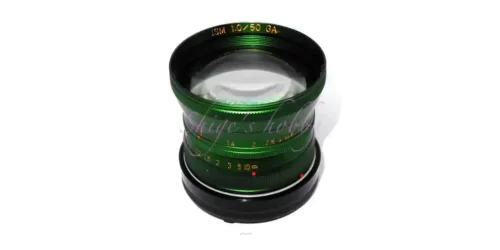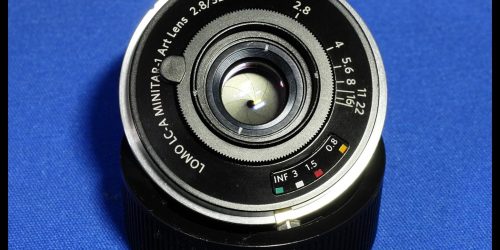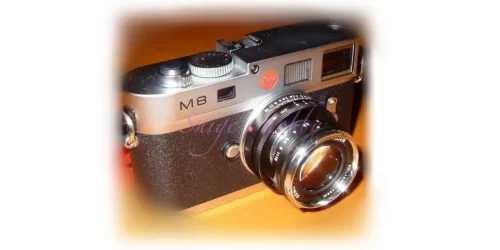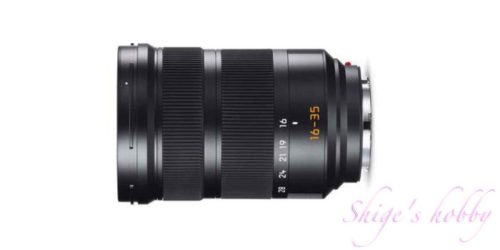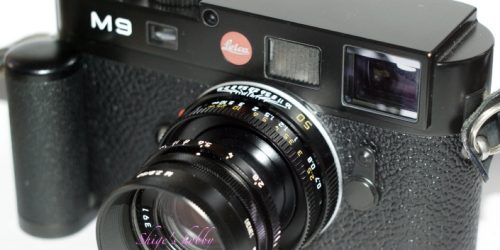LEICA SUMMILUX M 50mm ASPH.
Review and Photo example of the SUMMILUX M 50mm F1.4 ASPH. .
Table of contents
Gallery
- Sample photo taken with the LEICA M9 and LEICA M6 +Reversal film.
Review
Summilux M 50mm F1.4 ASPH. is a standard lens released in 2006 that uses an aspherical lens.
In addition to the hood-integrated model shown in the photo, a limited edition model with a lens barrel modeled after the first-generation Summilux is also available.
In the 2023 renewal, small specifications have been changed, such as shortening the minimum focusing distance and increasing the number of aperture blades to make the aperture shape closer to a perfect circle. With the renewal, prices rose further.
Normally, the lens hood of the model can be fixed by pulling it out and screwing it, but on the model I owned, there was an abnormality in the fixing part of the black lens, and the hood could not be fixed, so I sent it in for repair.
Both the black and silver Helicoids were very smooth and almost too light, so I sometimes had trouble focusing too much or making precise adjustments, but once I got used to them, I was able to operate them quickly, so I thought they were better than the heavier Helicoids.
When the aperture is wide open, the depiction of the focal plane with a sense of resolution and the smooth blurring of the image from there gives the impression that the photography has improved. I think it’s a normal lens when you use it apertured, but it’s true value is when you use it wide open. Depending on the situation, shooting with the aperture wide open could be disappointing, such as the background blurring being noisy when shooting close up, or rugby ball blur caused by vignetting when the aperture was wide open.
The Summilux M 50mm is the second-eldest lens in the Leica standard lens lineup; it is darker but lighter than the eldest son, NOCTILUX, and brighter than the third son, SUMMICRON, and has the same weight.
Other manufacturers’ lenses may be said to be half-baked, but Leica has established a unique position, and there is always market demand for them, with stable prices.
In terms of performance, a lens called the Apo Summicron 50mm was released that broke Leica’s lens hierarchy. The price of the Apo Summicron 50mm was the same as the Noctilux 50mm, so it seems that the unique position of the Summilux 50mm has not changed.
Among the Leica lenses, I liked the appearance of this lens, so I used both the brass silver and the aluminum black, but the silver was unnecessarily heavy, so I think the lighter black is better for portability. In the 2023 improved model, the silver and black materials will no longer be changed, and the weight will remain the same.
As for me, I used the Summilux 50mm in the first generation, third generation, and aspherical lenses, but I liked the depiction of the third generation the most.
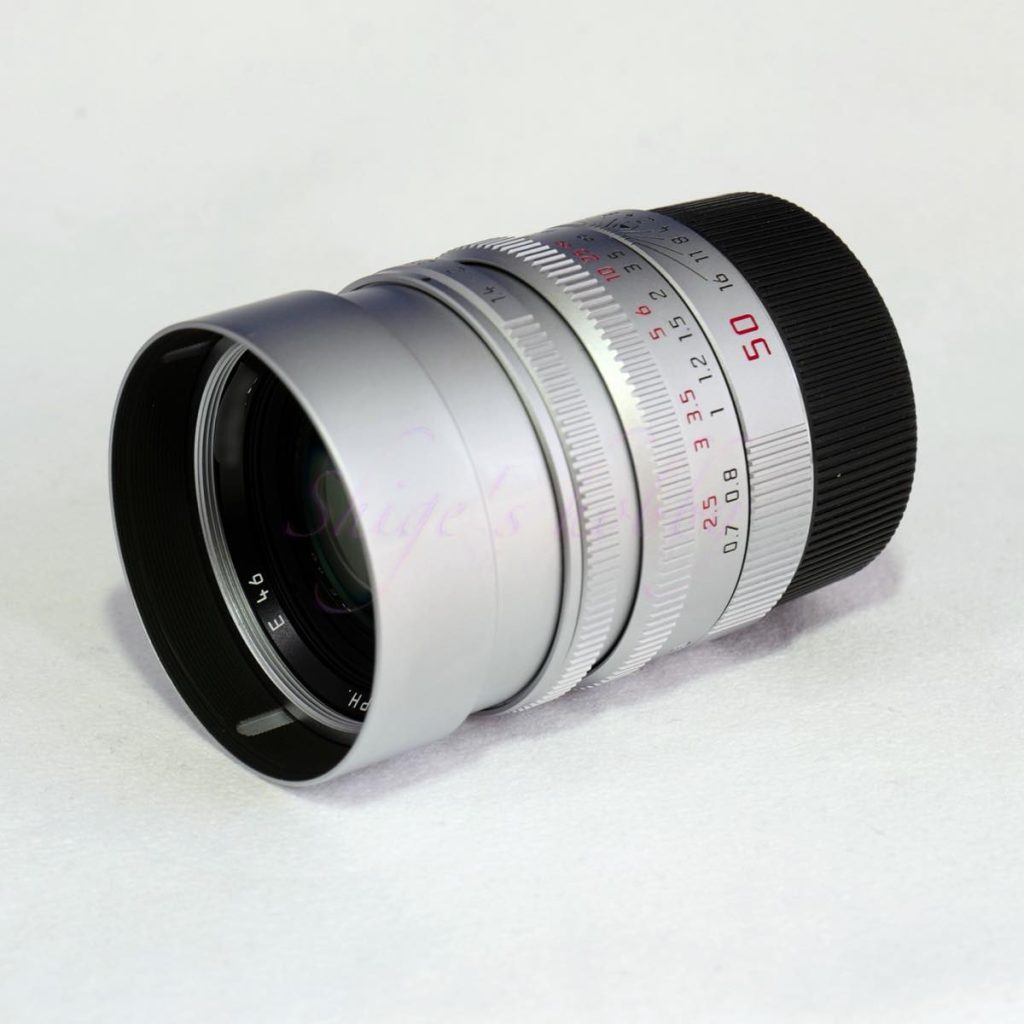
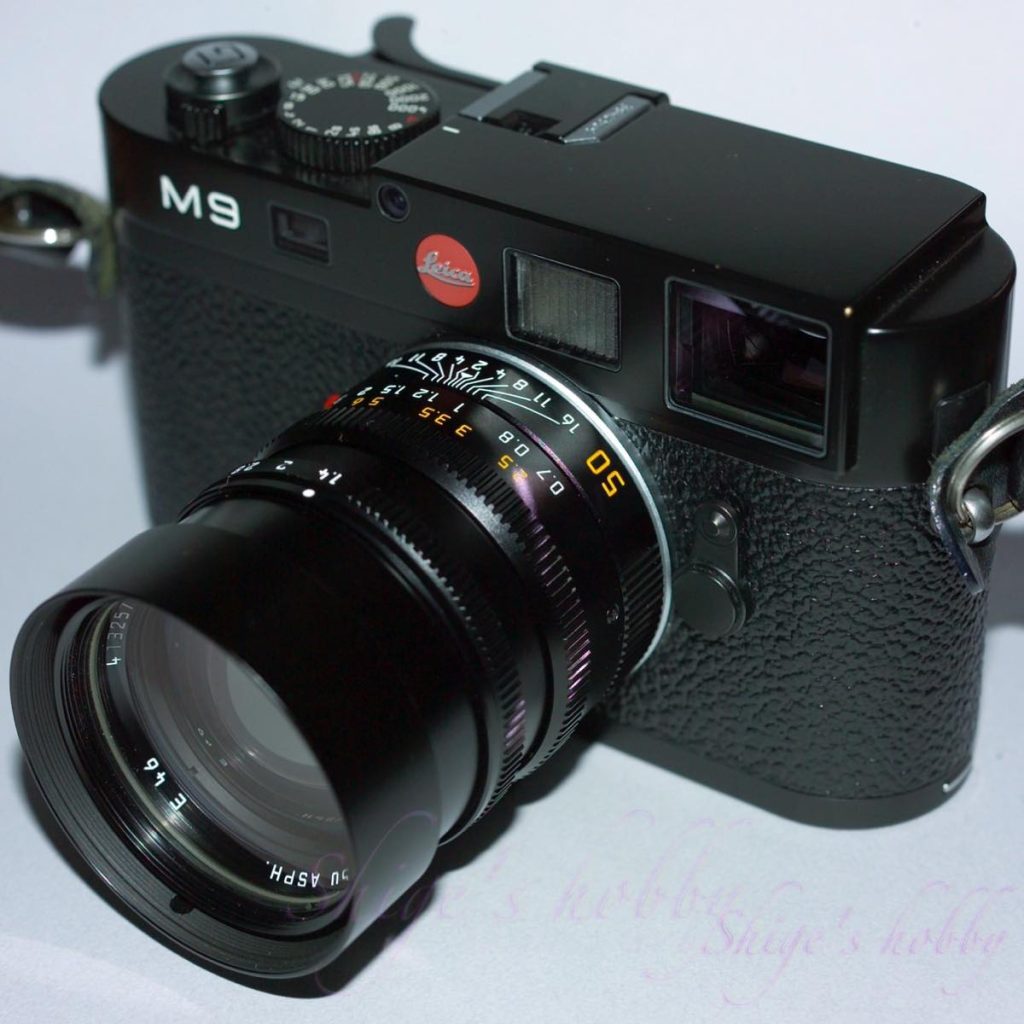

Specification
| Item | IV >New2023 | III | I,II |
| Lens name | SUMMILUX-M 50ASPH. | SUMMILUX-M 50 III型 | SUMMILUX-M 50 I,II型 |
| Focal length(mm) | 50 | 50 | 50 |
| Max aperture | 1.4 | 1.4 | 1.4 |
| Min aperture | 16 | 16 | 16 |
| Leaf blade | 9 >11(New) | 12 | 16 or 12 |
| Lens Construction | 8elements in 5group | 7elements in 5group | 7elements in 5group |
| Min distance(m) | 0.7 >0.45(New) | 0.7 | 1.0 |
| Lens length(mm) | 52.5 >59.3(New) | 54.5 | – |
| Lens Max diameter(mm) | 53.5 >58.6(New) | 47.7 | – |
| Filter Size(mm) | 46 | 46 | 43 |
| hood | Build in | Build in | XOOIM 12521 12586 |
| Weight(g) | 335(B) >337(New) 460(Sv) | 275(B) 380(Sv/Titan) | – |
| Release year | 2006 >2023 | 1992 | 1961 |
Reference links
Update history
- 2024.03.02:Update article
- 2023.06.16:First draft
Affiliate links
- Some external links are advertisements and clicking them may generate income for the site administrator.

